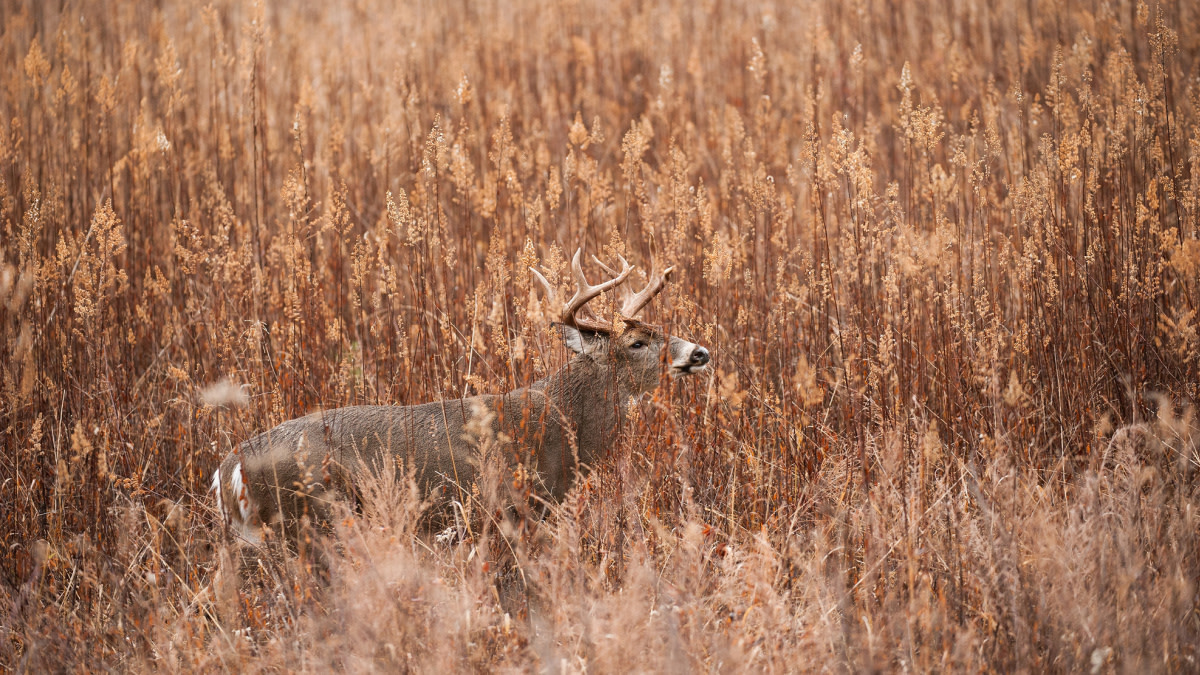
Time stood still. My mind blanked and nothing but my limbs functioned as they should. As I drew back the bow, it felt as if I were pulling excalibur from the stone. But the pin found its way to a brown patch behind the shoulder, my finger slid along the cool steel of my release and my arrow was released. My rage tipped shaft flew straight and the impact looked good. Mission accomplished.
(Insert rewinding tape sound here.) Psych. Mission accomplished? More like the mission has just begun. The real work begins after you take that shot and a big part of that job you have left to do involves blood trailing your deer. So although many of us have done this before, we always have room for improvement. So lets take a look at a number of tips and other resources we should all consider when taking up a blood trail.
The Blood Trailing Process The first thing you do, no matter what, is watch that deer run. Try to pinpoint the location where you last saw your deer and remember a landmark at this point. Also listen carefully for a final crash, indicating where your deer may be laying.
Try to remember how the deer reacted when it was hit. This can tell a lot about what kind of shot you got on the deer. If they kick their back legs in a mule kick, then you’ve probably got a good lung/vital area hit. If the deer hunches up its midsection, that points to a gut shot.
After waiting maybe 15-30 minutes, go check the area of impact. If you shot your deer with a bow, finding the arrow can tell a big piece of the story. Look for blood and sign on the arrow or around the area. Bright red or pinkish blood with little air bubbles in it will indicate a lung shot. A very dark red colored blood usually is a result of a liver shot, which is still a lethal hit. What you don’t want to see is green, foul smelling fluid or stomach matter. This means you’ve hit your deer in the gut, not what you want. If this happens, follow the steps outlined in my previous post, “How to Deal with a Gut Shot Deer."
After checking your impact area, mark it with something like blaze orange tape and wait the appropriate amount of time before taking up the trail. If you made a good hit in the vital area, I like to wait atleast an hour if I used a bow, but with a gun you can start sooner. If you had a gut shot, its recommended to wait more like 8-10 hours.
Now you can begin the actual trailing. If you saw or heard where your deer dropped, I think its fine to head in that direction and scan for awhile. If you don’t find your deer where you thought it was, head back to the initial point of impact and begin searching for the blood trail.
Try to walk off to the side of the blood trail, so as not to step all over your sign and destroy the trail as you go. If possible, don’t leave a spot of blood until you see the next one. If you do lose the trail, go back to the last blood and mark it. Now begin circling out and around this last known location, searching for any little drop of blood.
Get down on your hands and knees if you have to, but also remember blood can be up high too. Look for sprays of blood on high weeds, cattails and tree trunks.
So you’ve searched all around and you still can’t find the trail? It’s time to get some friends and grid search the area. Keep your eye out for those white patches on a deers belly and neck.
Be persistent. Keep searching until you have exhausted every possibility. It is every hunters obligation to give their very best shot to find every deer they hit.
Common Deer Behaviors to Keep in Mind A wounded deer will very rarely travel up hill, so search downhill in valleys, ditches and other low lying areas. This is not to say that a deer will never go uphill, but it is helpful to remember that they prefer not to. A deer that is mortally wounded will often bed down in hidden areas such as thickets, under downfalls, or under washed out river banks.
On the topic of rivers, after being hit in the vital area, many deer will head towards water. Rivers, streams, or any water source you can find will be key spots to look for your deer.
Feature image via Matt Hansen.



